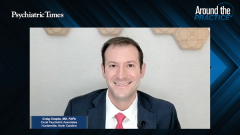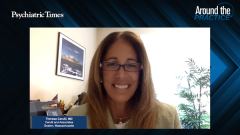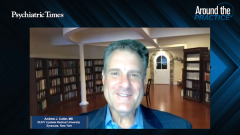
Case 3: Treatment Goals in Adult ADHD
Theresa Cerulli, MD, and Andrew J. Cutler, MD, provide insight on goals of therapy for patients with ADHD.
Episodes in this series

Theresa Cerulli, MD: We’ve followed along with our discussion. It’s not just about symptom control. That is one small piece. I would start with the overall goal is having the patients’ lives improve, be better. To be well-managed, to be able to take a treatment approach that both pharmacologic and non-pharmacologic interventions work for them, with minimal adverse effects, problems, hurdles, and with good adherence needed. What am I talking about? Overall, want to do a lot of psychoeducation with the patient. Help them with their symptomatology, but also just generally in their lives. With their family relationships, with their peer relationships, with their work productivity, with their school, in terms of academic performance. It’s, how do you create an individualized treatment plan that takes the whole picture into consideration? That their lives are better, and that we’re at least minimizing the downside or adverse effects as much as possible.
Stephen Faraone, PhD: This patient is a good example, because she had been treated, but she complains that she has no off button after work. It sounds like, almost, driven like a motor thing that kids have. What do we do in that case when somebody needs to have medication after work? Because for her, apparently, it’s not working when she leaves work.
Theresa Cerulli, MD: Back to what Andy described when we talked about medications, stimulants, and non-stimulants. The non-stimulants are there 24/7. This may be somebody who could benefit from a non-stimulant, or the combination. We have some patients that need both a non-stimulant, but a little bit of low-dose stimulant with it. It could be that we change the time of day she’s exercising, for example. It’s not about just medication. It’s about altering one’s daily schedule. It’s looking at if they’re working with an ADD coach. Maybe it’s a problem; their symptomatology is worse towards the end of the day because they’re not getting enough sleep the night before. They’re night owls. A lot of times, with ADHD, they’re phase-delayed in their sleep patterns. Working on sleep hygiene. It just must be tailored to that individual. And I mean both the pharmacologic and non-pharmacologic interventions. A typical thing I have people do aside from the diagnosis, it’s, “Walk me through your typical day. What does a day look like for you, from the time you get up until the time you go to bed?” And then the second question is, “And what aspect of that day do we need to see improved, that could be easier, better for you?” Knowing that the answer might be all the above. But start somewhere.
Andrew J. Cutler, MD: The other thing I always assess is caffeine use. And caffeine with a stimulant is an interesting, tricky combination. I always want to know; how much caffeine are they using? And I always joke, “Show me an adult with ADHD who doesn’t use caffeine, and I’ll show you a leprechaun.” I’m sure they exist. The other thing is over-the-counter medications. I have been shocked sometimes when people bring me bottles of things they’re buying over the counter, and they’re taking. And they’re just loaded with stimulants that are not obvious. There are various alkaloids. There are things like guarana seed, that are all stimulants.
Transcript edited for clarity
Newsletter
Receive trusted psychiatric news, expert analysis, and clinical insights — subscribe today to support your practice and your patients.
















